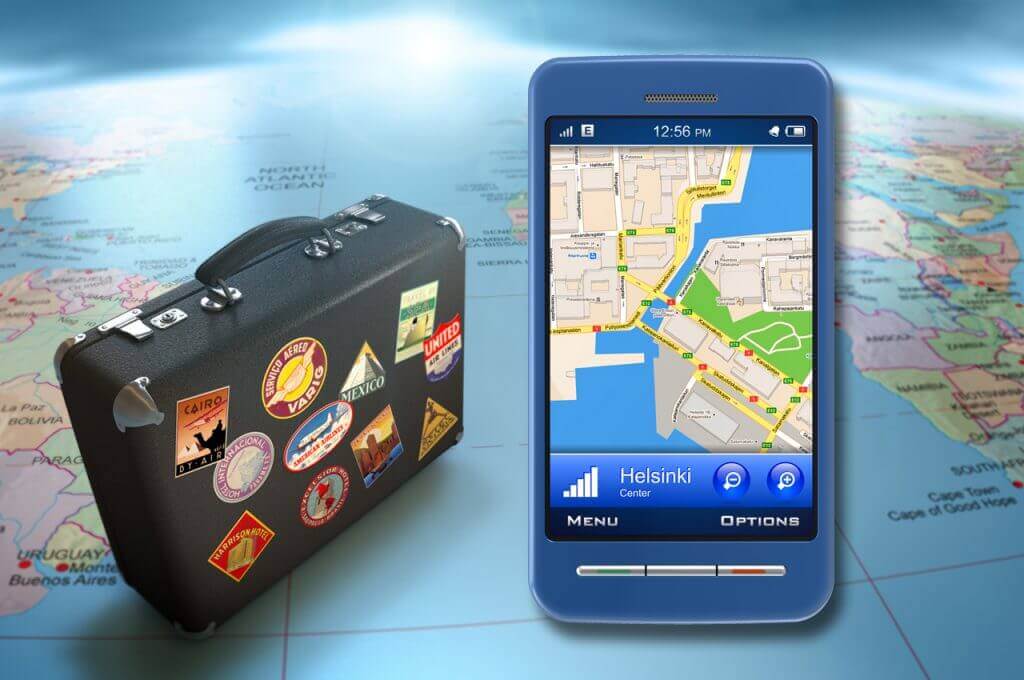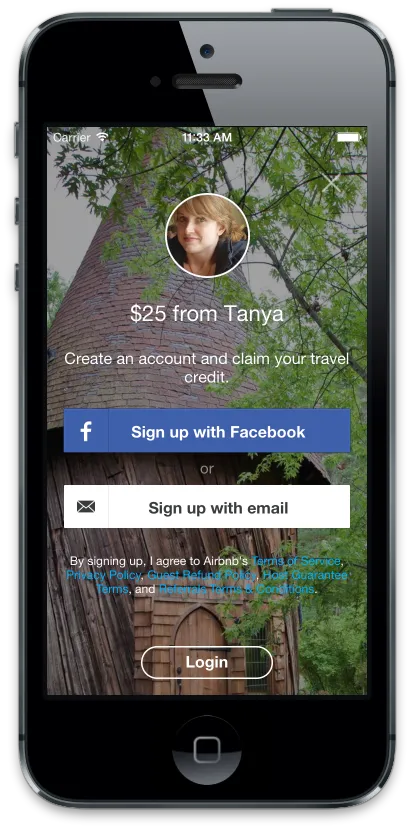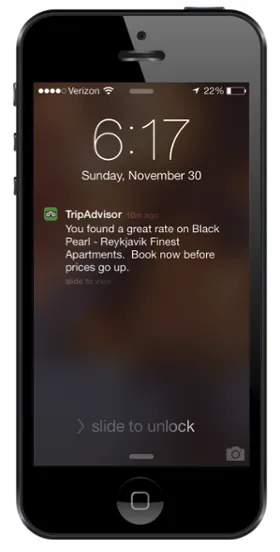
Travel brands understand better than anyone that it’s more fun to live on the move. By adopting mobile marketing techniques, these companies are recognizing consumer demand for a truly multichannel customer experience.
This post will examine the seven most effective examples of travel brands reaching customers with relevant mobile marketing. We’ll look into specific mobile techniques like in-app messaging, push notifications, mobile email and responsive landing pages.
#1 Airbnb – In-App Referral Landing Page

Airbnb makes it easy on users to bridge the activation gap and start using their app with this responsive mobile landing page. With a strong hero image to communicate the value within the app, the brand greets potential users with a friendly face and a pared-down design to make enrolling a breeze. In the ever-more mobile world, having web pages adapted to each device is critical.
The copy here is value-forward and direct, concise to the point of being visually appealing – it’s cut to fit the screen. The calls to action (CTA) are a must-see and there are only two real options: signup or login.
The design hierarchy has large, actionable CTA boxes to make the choice easy for first-time users.
Already having optimized for mobile app conversions, Airbnb uses referrals to great effect to maximize engagement. Aiding in this is the simplified set of sign-up options. A quick email or an even quicker Facebook sign in glosses over the only technical aspect of signup and prepares the user to book immediately.
#2 TripAdvisor – Triggered Push Notification

TripAdvisor uses push notifications in a fashion similar to Airbnb’s onboarding process. Even for the self proclaimed “World’s Largest Travel Site,” remaining top of mind (and within the top three) with users, is the apps biggest challenge.
The travel industry giant makes short work of providing benefits to users on their home screen. Extra points for their use of the bright green, familiar logo icon to instantly relate feelings of brand loyalty and enthusiasm.
Push notification strategy is a touchy subject and requires a degree of finesse, as these notifications are seen by permission only; once viewers disable messaging, the app is on the way out the door. Drawing users in with personalized language (e.g., “You found”) gives the copy immediate relevance and punch while following up with information users have requested.
With push notifications, space is at a premium and attention spans are short – and easily upset. TripAdvisor uses only two sentences in the message, finishing with a sense of urgency and action-specific language to drive results. Scarcity leads to demand, so brief copy is essential to relating the necessary data and drawing users into another round of engagement.
Read rest of the article at Customer Think




